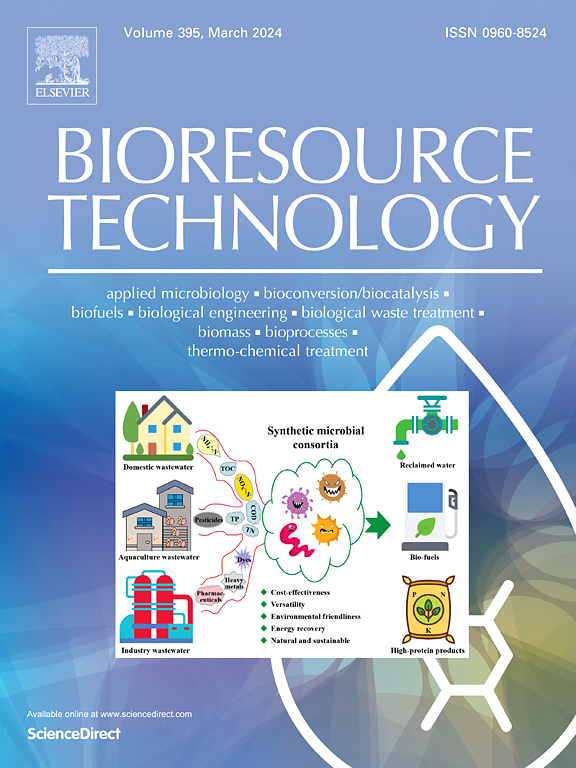Production of caproate from lactate by chain elongation under electro-fermentation: Dual role of exogenous ethanol electron donor
IF 9.7
1区 环境科学与生态学
Q1 AGRICULTURAL ENGINEERING
引用次数: 0
Abstract
Ethanol and lactate as co-electron donors (co-EDs) on chain elongation (CE) have been studied, however, the effects of ethanol on lactate-driven CE remain unknown. This study evaluated the caproate production performance from lactate under different ethanol additions (7.67–23.01 g/L), and determined the optimal ethanol concentration. The results showed that the highest caproate yield of 4.51 g/L was obtained at 15.34 g/L ethanol concentration. The synergistic effects of co-EDs on caproate production were enhanced due to more stable pH and higher reducing power under appropriate ethanol stimulation. Functional bacteria related to caproate production, including Sporanaerobacter and Clostridium_senseu_stricto_12, were specifically enriched under appropriate ethanol stimulation. The ethanol toxicity caused by excessive concentration (more than 23.01 g/L) inhibited the growth of key CE bacteria and reduced the production of caproate. This study revealed the dual effects of ethanol in the co-EDs fermentation system for caproate production and determined the threshold of ethanol addition.

求助全文
约1分钟内获得全文
求助全文
来源期刊

Bioresource Technology
工程技术-能源与燃料
CiteScore
20.80
自引率
19.30%
发文量
2013
审稿时长
12 days
期刊介绍:
Bioresource Technology publishes original articles, review articles, case studies, and short communications covering the fundamentals, applications, and management of bioresource technology. The journal seeks to advance and disseminate knowledge across various areas related to biomass, biological waste treatment, bioenergy, biotransformations, bioresource systems analysis, and associated conversion or production technologies.
Topics include:
• Biofuels: liquid and gaseous biofuels production, modeling and economics
• Bioprocesses and bioproducts: biocatalysis and fermentations
• Biomass and feedstocks utilization: bioconversion of agro-industrial residues
• Environmental protection: biological waste treatment
• Thermochemical conversion of biomass: combustion, pyrolysis, gasification, catalysis.
 求助内容:
求助内容: 应助结果提醒方式:
应助结果提醒方式:


